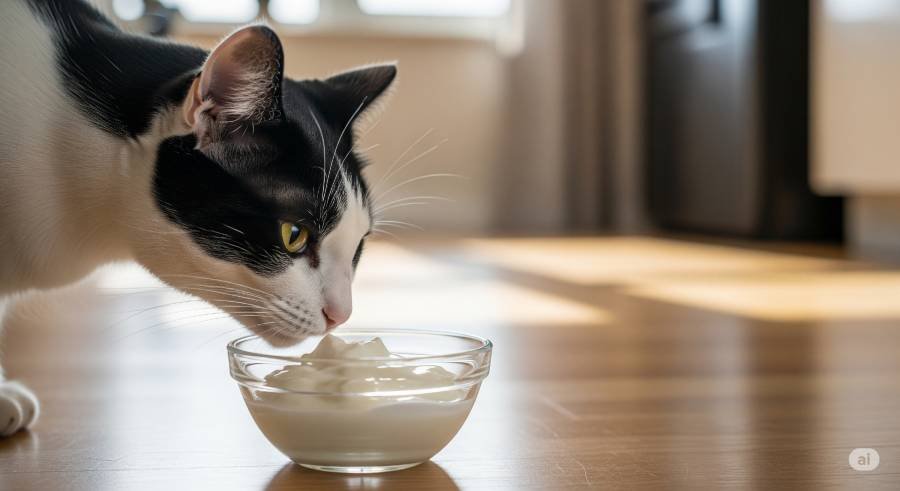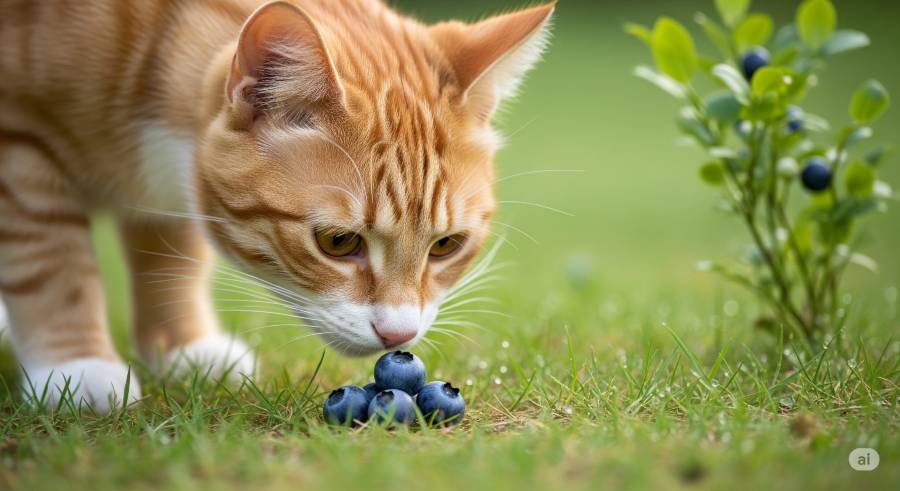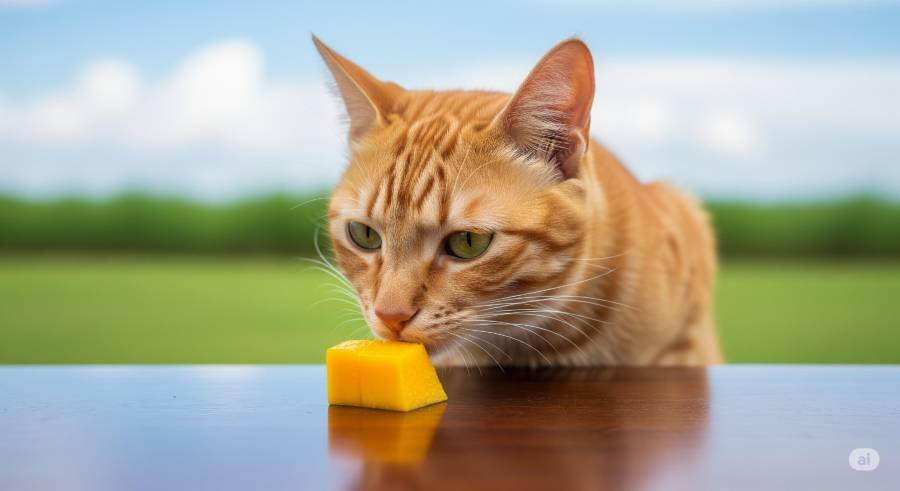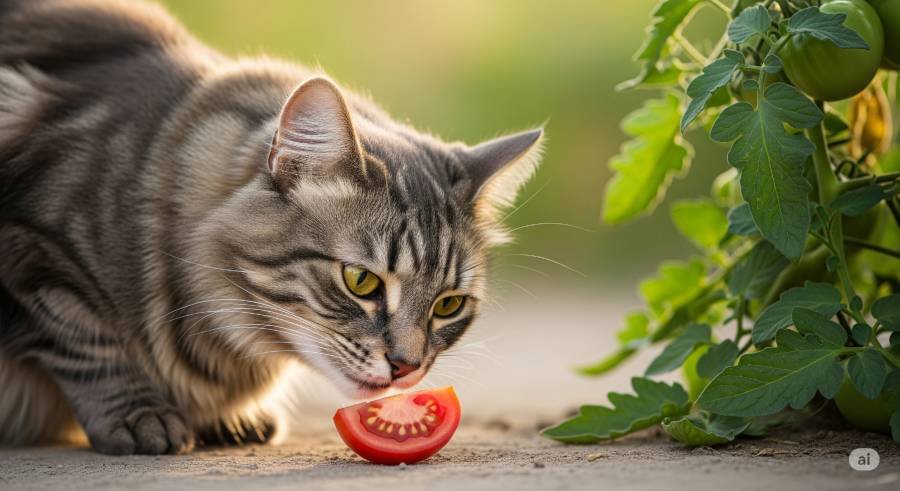Yes, cats can eat tuna, but only in very small amounts and as an occasional treat.
While many feline friends love the taste of tuna, it should not be a regular or significant part of a cat’s diet due to potential health risks.

Why Cats Love Tuna
Tuna has a strong aroma and flavor. This makes it highly appealing to cats. Their predatory instincts draw them to fish.
Many commercial cat food products even feature tuna as a main ingredient. This reinforces the idea that tuna is a natural food source for cats.
However, the tuna found in cat food is specially formulated. It provides a balanced diet. Human-grade tuna, consumed by humans, is different.
Nutritional Aspects of Tuna for Cats
Tuna offers some nutritional benefits. It is a good source of protein. It also contains omega-3 fatty acids. These fatty acids support skin and coat health.
Tuna provides various vitamins and minerals. These include Vitamin B12, Vitamin D, and selenium. Despite these positives, its drawbacks outweigh the benefits when fed in large amounts.
High in Mercury
One of the most significant concerns with feeding your cat tuna is its mercury content. Tuna is high in mercury. This heavy metal accumulates in fish over time. Larger fish, like albacore tuna, tend to have higher mercury levels than smaller fish, such as skipjack or light tuna.
Regular or large amounts of tuna can lead to mercury poisoning in cats. Symptoms of mercury poisoning can include neurological problems. These may manifest as incoordination, loss of balance, and tremors. It can also cause kidney damage. This is a serious risk for your feline companions.
Unbalanced Nutrition
A cat’s diet needs to be complete and balanced. Cat food is specially formulated to meet all their nutritional requirements. Feeding your cat tuna exclusively or in large amounts can lead to nutritional deficiencies.
Tuna lacks essential vitamins and minerals crucial for a cat’s long-term health. For example, it is deficient in Vitamin E and calcium. A diet predominantly of tuna can result in “Thiamine Deficiency.”
Thiamine (Vitamin B1) is vital for a cat’s neurological function. Tuna contains an enzyme called thiaminase. This enzyme breaks down thiamine.
If a cat eats too much tuna, especially raw fish, it can develop a thiamine deficiency. This can lead to severe neurological issues.
High in Unsaturated Fats
While omega-3s are beneficial, tuna is also high in unsaturated fats. Feeding large amounts of these fats without balanced antioxidants like Vitamin E can lead to a condition called Steatitis, or “yellow fat disease.” This is a painful inflammatory condition of the fat tissues. It can cause lethargy, pain upon touch, and fever.
Sodium Content
Canned tuna for human consumption often contains added sodium. While some sodium is necessary, excessive amounts can be harmful to cats. High sodium intake can lead to increased thirst and urination.
In severe cases, it can contribute to sodium ion poisoning. Always opt for tuna packed in water with no added salt if you choose to offer it.
Risks of Feeding Tuna to Cats
Beyond nutritional imbalances, several direct risks are associated with feeding tuna to cats.
Tuna Addiction (“Tuna Junkie”)
Cats can develop a strong preference for tuna. This can lead to them refusing their regular cat food. This behavior is often termed “tuna addiction.”
If a cat eats tuna consistently, they may reject their balanced diet. This then compounds the issue of nutritional deficiencies. It can be challenging to switch them back to proper cat food once they become accustomed to tuna.
Gastrointestinal Upset
Even in small amounts, some cats may experience gastrointestinal upset. This includes vomiting or diarrhea. This can happen if their system is sensitive to new foods or if the tuna is introduced too quickly.
Bones and Choking Hazard
While less common in canned tuna, be cautious with fresh tuna or tuna prepared at home. Small bones can pose a choking hazard or cause internal damage. Always ensure any fish offered is boneless. This is a crucial safety measure when considering any type of fish for your pet, whether it’s tuna or even salmon.
Contamination Concerns (Raw Tuna)
Feeding your cat raw fish, including raw tuna, carries additional risks. Raw fish can contain harmful bacteria like Salmonella or E. coli. These can cause severe digestive problems for your cat.
They can also contain parasites. Always cook any fish you intend to feed your cat thoroughly. This applies to feeding your cat tuna or exploring if shrimp is a safe treat.
How to Safely Offer Tuna to Your Cat
If you choose to offer tuna, strict guidelines must be followed to minimize risks.
Choose the Right Type of Tuna
- Plain, Canned Tuna in Water: This is the safest option. Ensure it is packed in water, not oil. Choose varieties with no added salt or flavorings.
- Light Tuna (Skipjack): Opt for “light” tuna over albacore tuna. Light tuna generally has lower mercury levels.
- Flaked, Not Solid: Flaked tuna is easier to break down. This reduces any potential choking risk.
Prepare it Properly
- Drain Thoroughly: Drain all the water or oil.
- No Seasonings: Never add salt, spices, onions, garlic, or other seasonings. Many human spices are toxic to cats.
- Cooked Only: If using fresh tuna, cook it thoroughly. Plain baked or boiled is best. Do not serve cat raw fish.
Small Amounts and Infrequently
- Treat Only: Tuna should always be a rare treat, not a meal replacement.
- Portion Size: Offer a very small amount. A teaspoon or two, once or twice a week at most, is generally sufficient for most cats. It should always be a tiny fraction of their overall caloric intake.
- Monitoring: Introduce it slowly. Watch for any signs of digestive upset or allergic reactions.
Alternatives to Tuna for Cats
If you’re looking for healthy treats for your cat, many alternatives are safer and nutritionally sound.
Commercial Cat Treats
These are formulated for feline nutrition. They often come in various flavors and textures.
Cooked Lean Meats
Small, plain pieces of cooked chicken, turkey, or lean beef are excellent protein sources. These are much safer than processed meats like bacon or high-mercury fish.
Other Fish Options (In Moderation)
Some other fish can be given rarely. Cooked sardines (packed in water, no salt) are sometimes recommended due to their smaller size and lower mercury content. However, like tuna, feed them in very small amounts.
Specific Fruits and Vegetables
While cats are carnivores, some may enjoy tiny pieces of certain fruits and vegetables as a novel treat.
For example, some cats might like a small piece of banana or a tiny bite of plain cooked pumpkin. Always research before offering new human foods.
Explore what human food can cats eat for a broader understanding. Similarly, if you are curious about giving your cats garden produce, check what vegetables can cats eat.
When to Consult Your Veterinarian
Always consult your veterinarian before introducing any new human foods into your cat’s diet. This is especially crucial if your cat has existing health conditions.
These include kidney disease, heart conditions, or a history of pancreatitis. Your vet can provide personalized advice based on your cat’s specific health needs and ensure that any new additions align with a balanced diet.
If your cat accidentally consumes a large amount of tuna or shows any signs of illness (vomiting, diarrhea, lethargy, neurological symptoms), seek immediate veterinary attention.
In summary, while cats love the taste of tuna, it is best kept as a rare and special treat. The risks associated with mercury poisoning, nutritional imbalances, and potential addiction mean that tuna should never be a staple in a cat’s diet. Prioritize their regular, balanced cat food.
When offering tuna, ensure it is plain, canned in water, unsalted, and in very small amounts.
Always put your cat’s long-term health first and consult your veterinarian for expert guidance on feeding your cat tuna or any other human food.





